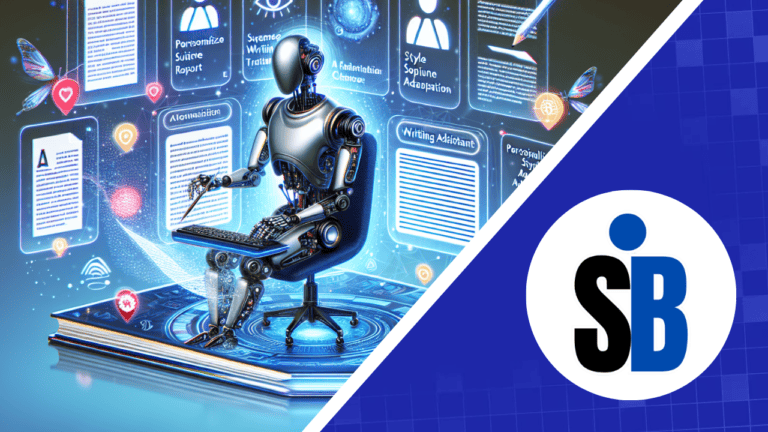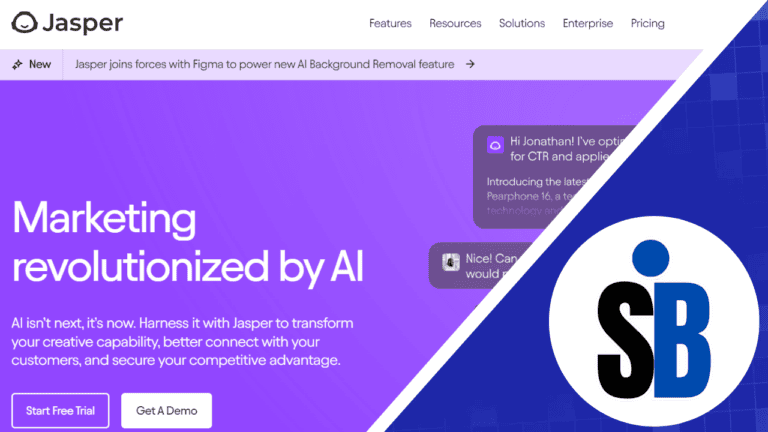If you’ve been keeping up with the latest advancements in tech, then AI writing is definitely something you have heard about.
Love it or hate it, AI writing is here, and it’s (kind of) replacing human writers, not to mention they are far quicker at creating content, and dare I say way cheaper too.
I know, I know, it sounds too good to be true, but trust me, it’s real and it’s incredible.
Now, you might be thinking, “But wait, isn’t AI writing just a bunch of computer-generated gibberish?” Well, perhaps 5 years ago that was the case, but nowadays, that couldn’t be further from the truth.
This detailed article will give you the full rundown on everything you need to know about AI writing.
I will touch upon aspects regarding how AI writing works, concerns and limitations, real-world applications, the future of AI writing, and finally touch upon some tools I recommend for all of your various AI writing needs.
How Does AI Writing Work Exactly?
In order to generate human-like text, AI writers are trained on existing writing, and incorporate Natural Language Processing (NLP) to produce similar results. Let me explain further:
Natural Language Processing (NLP)

At the heart of AI writing is natural language processing, or NLP. This is the branch of AI that deals with how computers understand, interpret, and generate human language.
NLP is what allows AI models to make sense of the vast amounts of unstructured text data on the web. By analyzing patterns in word usage, syntax, and semantics, NLP enables machines to comprehend the meaning and context behind the words we use.
This is crucial for AI writing because it’s not just about stringing words together randomly – it’s about creating content that makes sense and resonates with readers on a deeper level.
To actually generate human-like text, AI writing tools rely on deep learning algorithms. These are complex neural networks that can learn and make decisions based on vast amounts of data. The most common type of deep learning algorithm used in AI writing is the transformer model, which was introduced by Google in 2017.
Transformer models are designed to handle sequential data, like the order of words in a sentence, and learn the relationships between them. By training on millions of examples of human-written text, transformer models can predict the most likely next word in a sequence based on the context of the words that come before it.
And by stacking these predictions together, they can generate entire paragraphs and even full articles that mimic human writing.
Training AI Models on Vast Datasets

Of course, the quality of the output depends on the quality and quantity of the data used to train the AI model. And when it comes to AI writing, we’re talking about some seriously big data.
The most advanced AI language models, like OpenAI’s GPT-4, are trained on hundreds of billions of words from across the internet. This includes everything from books and articles to social media posts and websites.
By exposing the AI to such a vast and diverse range of writing styles, topics, and formats, researchers can create models that are incredibly versatile and adaptable. GPT-4, for example, can write everything from poetry to code to recipes, all based on a simple prompt.
Generating Human-Like Text
The end result of all this machine learning and data crunching is AI models that can generate text that is virtually indistinguishable from human writing, including high quality content.
And I’m not just talking about simple, formulaic content like product descriptions or weather reports.
I’ve seen AI tools create content with nuance, personality, and even humor.
They can adapt to different tones and styles, from casual and conversational to formal and academic. They can even mimic the writing of specific authors or public figures.
Now before you freak out about AI taking over, AI writing is far from perfect. It can still make mistakes, generate nonsensical or repetitive text, or struggle with complex topics that require deep expertise. But the technology is improving at a rapid pace, and the potential applications are truly mind-boggling.
Limitations and Concerns Surrounding AI Writing
As amazing as AI writing tools are, they’re not perfect. They are still a relatively new technology, so there are a number or concerns and limitations that have arisen as it pertains to AI writing.
Lack of Originality
One of the biggest issues with AI-generated content is that it can lack that human touch of originality and creativity.
AI writers work by analyzing patterns in existing content and replicating them. So while the output might be grammatically correct and read well, it often lacks the spark of innovative ideas and unique perspectives that human writers bring to the table.
I have personally tested a lot of AI writing tools, and I can say that the content, while impressive, often feels a bit generic and templated. It’s almost always the case that the AI output lacks that special something that makes truly great writing stand out.
Human writers have the ability to think outside the box, make unexpected connections, and infuse their work with personality and style in a way that AI just can’t replicate (yet).
Potential for Inaccuracies and Biases

Another concern with AI writing is the potential for inaccuracies and biases in the generated content.
AI models are only as good as the data they’re trained on. If that training data contains errors, outdated information, or biased perspectives, those issues can make their way into the AI’s output.
For example, an AI writer might confidently state a “fact” that is actually false because it appeared frequently in the data it was trained on. Or it might display biases around race, gender, or other sensitive topics based on biased patterns in its training data.
As a content creator, you can’t just blindly trust the output from an AI writer. It’s crucial to fact-check, review for potential biases, and critically evaluate the content before publishing.
Human discernment and judgment are still very, very much needed.
Ethical Concerns Regarding Automated Content Creation
As these smart typing helpers take over, they bring along a plethora of tricky moral questions that have yet to be answered.
One major concern is the potential for these tools to be used to generate misinformation, propaganda, or other harmful content at scale. In the wrong hands, AI content generators could be used to swamp the internet with fake news, scams, or extremist views.
There are also questions about the economic impact on human writers. Will AI writing tools put content creators out of a job? How do we fairly attribute authorship when an article is generated by AI? What happens to the quality and diversity of online content if much of it is being churned out by algorithms?
These are complex issues that society will need to grapple with as AI writing tools become more sophisticated and widely used.
As someone who has built my career on content creation, I believe there will always be a vital role for human creativity and insight. But I also recognize that AI will increasingly be part of the landscape, and we need frameworks to use it ethically and responsibly.
Real-World Applications of AI Writing
Despite the limitations and concerns, AI writing is already being used in some exciting ways across industries. Here are a few real-world applications that showcase the potential of this technology:
Online retailers are using AI content generators to create product descriptions at scale. With large catalogs featuring hundreds or thousands of products, manually writing a description for each one is time-consuming and costly.
AI tools can take key details like brand name, product features, dimensions, and materials, and generate human-like descriptions almost instantly. With this out of the way, folks handling online shops get to spend more effort improving how things look for buyers and ensuring everything’s stocked right.
For example, the e-commerce platform Shopify recently introduced an AI assistant that can generate product descriptions right within their interface. Merchants simply enter a product name and a few key details, and the AI creates a unique, SEO-friendly description.

Social Media Posts and Ads
Managing a brand’s social media presence is a huge job that requires churning out fresh content daily.
Many social media managers are turning to AI writing tools to help generate post ideas, captions, and ad copy at scale. Many AI tools have templates specifically designed for platforms like Twitter (X), Instagram, Facebook, LinkedIn, and more.
You can enter a few key details about your brand and campaign, and the AI will generate multiple post options to choose from. This is a huge time-saver and helps ensure a steady stream of on-brand content.
Chatbot Responses
Chatbots paired with conversational AI take things to an entirely new level of excitement.
By training on large datasets of real customer interactions, AI language models can generate human-like responses to common queries.
This enables brands to provide 24/7 customer support and lead generation through chatbots, without needing a human agent to be available at all times. The AI can handle routine questions, provide information, and even guide users through processes like troubleshooting or making a purchase.
Of course, there are limitations to what chatbots can handle, and human agents are still needed for more complex or sensitive issues. But AI-powered chatbots are becoming an increasingly important part of the customer experience.
I believe we’ll see even more applications emerge as AI writing technology advances. The key will be to use it strategically, with human oversight, and in service of real business and customer needs.
The Future of AI Writing and Its Impact on Content Creation

As someone who has built a career around content creation, I’m fascinated by the rapid advancements in AI writing technology and what it means for the future of the industry. Here are some of the key trends and implications I see on the horizon:
First, it’s clear that AI writing tools will only become more sophisticated and capable in the coming years. As language models become more advanced and training datasets grow larger and more diverse, we can expect to see AI-generated content that is increasingly indistinguishable from human writing.
I believe these tools will become increasingly collaborative, working alongside human writers to enhance and accelerate the creative process.
Integration with Other Content Creation Tools
I also predict that we’ll see more integration of AI writing capabilities into other content creation tools and platforms. Just as design tools like Canva are incorporating AI image generation, I expect to see AI writing assistants built into popular content management systems, social media platforms, and marketing automation tools.
This will make it even easier for businesses and creators to leverage AI in their content workflows, without needing to learn new standalone tools. The AI will simply become another tool in the content creation toolkit, alongside things like SEO optimization and data analytics.
As AI writing tools become more advanced, it’s possible that we’ll see the emergence of fully automated content generation for certain types of content. For example, data-driven reports, product descriptions, and news summaries could potentially be generated entirely by AI, with minimal human involvement.
However, I believe there will always be a role for human creativity, storytelling, and strategic thinking in content creation. There’s a certain warmth and depth missing when machines do all the writing. They’re quick, yeah, but they lack our knack for hitting right where it matters – in crafting messages that resonate deeply.
Implications for Content Creators and Marketers
For content creators and marketers, the rise of AI writing tools presents both opportunities and challenges. Besides giving birth to innovative notions left and right, they make expanding your pool of material seem almost too easy. On the other hand, the increasing accessibility of AI writing tools may lead to a flood of low-quality, generic content that makes it harder to stand out.
It could also potentially devalue certain types of writing skills and put downward pressure on prices. As a content creator, I believe the key is to embrace AI as a tool, but not a replacement for human skill and creativity.
Ultimately, I’m excited about the potential for AI to enhance and augment human creativity, not replace it. By staying curious, adaptable, and focused on providing real value to our audiences, content creators can thrive in an AI-powered world. It won’t be easy, but I believe the rewards will be worth it.
Types of AI Writing Tools
The world of AI writing tools is vast and varied. There’s something for every type of content and every stage of the writing process. Let’s take a look at some of the most popular categories:
AI-Powered Content Generators
These are the workhorses of the AI writing world. Tools like Jasper AI and SurferSEO can generate entire articles, create blog posts, product descriptions, and more with just a few prompts from you.
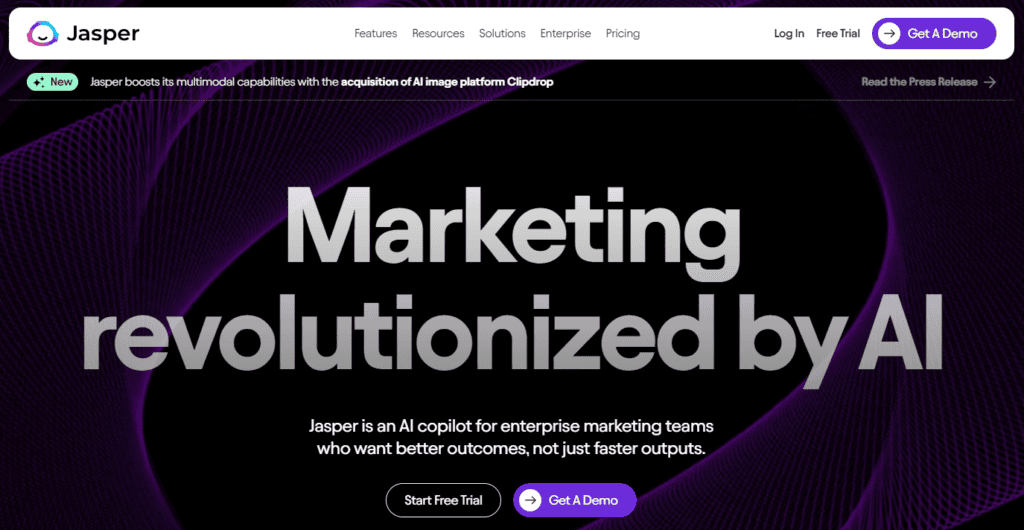
It’s important to note that while these AI tools can produce entire blog posts with the click of a button, they will still require some human intervention, specifically as it pertains to reviewing the content for accuracy and coherence, more on this later.
I have personally tested these products and have used them to create everything from social media posts to long-form content, and I’m always impressed by the quality and relevance of the output. I do go in after the AI is done generating and add my own tweaks though.
AI Writing Assistant Editing Tools
For more in-depth editing and feedback, there are AI-powered tools like Quillbot Flow and GrammarlyGO. These analyze your writing at a deeper level, looking at things like sentence structure, readability, and emotional tone.
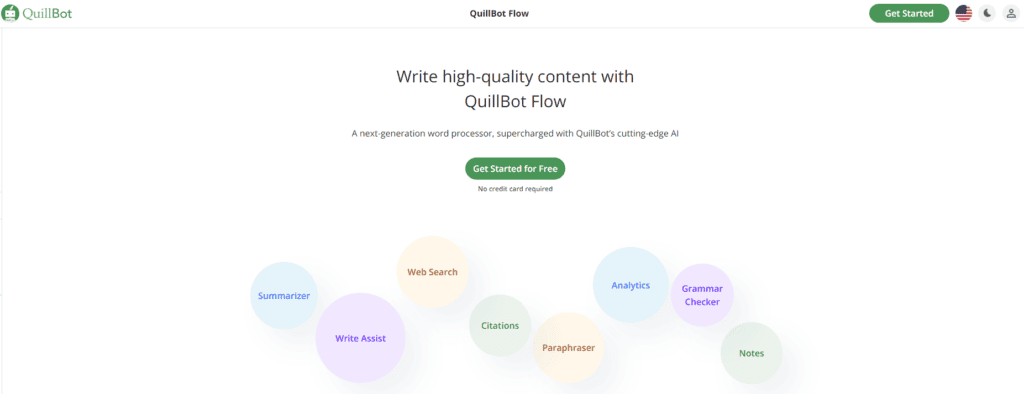
I’ve found these tools incredibly helpful for identifying areas where my writing might be too complex or dry, and for ensuring my content aligns with my target audience and goals.
GrammarlyGO is great due to its ability to be used anywhere with its browser extension, while Quillbot Flow excels due to its simple document editor.
Overcoming Writer’s Block
We’ve all been there – staring at a blinking cursor, waiting for inspiration to strike. It’s the worst. But with AI writing tools, specifically an AI writing assistant, writer’s block can be a thing of the past.
Tools like Jasper AI and HyperWrite have built-in templates and prompts designed to get your creative juices flowing. Just input a few key details about your topic or audience, and the AI writing assistant will generate a list of potential angles, outlines, and even full paragraphs to get you started.
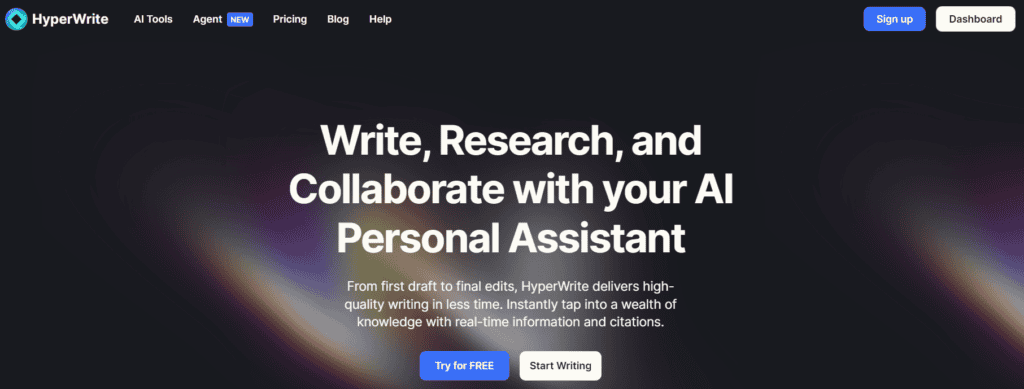
It’s no different than having a brainstorming buddy who never runs out of ideas. And once you have that initial spark, the words start flowing much more easily.
Generating Ideas and Outlines
Speaking of ideas, AI tools are also fantastic for helping you generate and organize your thoughts. I can’t tell you how many times I’ve sat down to write a blog post with only a vague notion of what I wanted to cover. But by using these AI writing tools, I can input my main topic or keyword and get a detailed outline based on what’s already ranking in search results.
The AI analyzes top-performing content and identifies the key subtopics, questions, and themes I should cover in my own piece. Not only does this save me hours of research, but it also ensures my content is comprehensive and optimized for SEO. Win-win.
Of course, the biggest benefit of AI writing tools is the sheer speed and efficiency they offer. I can create a 1,000+ word blog post in just a few minutes with the help of AI, whereas it might have taken me a full day or longer to write from scratch.
And it’s not just about pumping out content quickly – it’s about freeing up time and mental energy for higher-level tasks.
With AI handling the more rote aspects of writing, like research and outlining, I can focus on the parts that really require a human touch such as the storytelling, the analysis, the insights and more.
Maintaining Consistency in Writing Style
Another big challenge in content creation is maintaining a consistent style and tone across all your pieces. This is especially true if you have multiple writers or contributors working on your site. But with AI tools, you can train the model on your specific brand voice and guidelines.
Most AI writing tools come equipped with custom voice features which allow the AI writer to emulate or write in a specific tone of voice. This can be achieved through inputting examples of your existing content so the AI can learn to mimic your style, or even simply explaining to the AI how you want it to be written.
This means every piece of content, no matter who writes it, will have the same recognizable voice and personality. It’s a huge time-saver and ensures a cohesive experience for your audience.
Optimizing Content for Search Engines
Finally, AI writing tools can help ensure your content is optimized for search engines right out of the gate. Because AI is trained on high-performing content, it naturally incorporates SEO best practices like using header tags, optimizing meta descriptions, and including internal and external links. As someone who’s been in the content game for a long time, I can tell you this is a huge advantage.
The absolute best tools for SEO AI writing is without a doubt SurferSEO. It goes above and beyond in ensuring your content is perfectly SEO optimized and ready to rank.
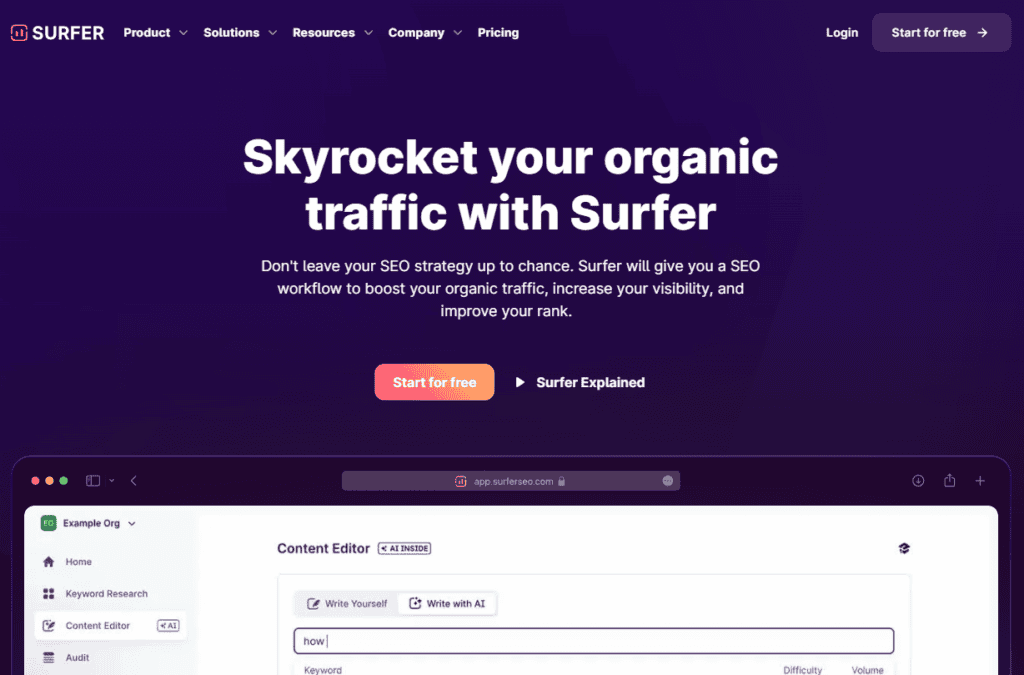
SEO is complex and ever-changing, but with AI writing tools, you can create content that ranks without having to be an expert yourself.
So far, we’ve talked a lot about the practical applications of AI writing tools. But to really understand their potential, we need to dive into the technical side a bit. Specifically, the role of machine learning in enabling these tools to generate human-like text.
Conclusion
AI writing represents a transformative tool for content creators, offering unparalleled speed and efficiency in content generation.
Embracing AI can revolutionize how bloggers, marketers, and entrepreneurs engage with their audiences. I encourage you to explore AI writing aids and discover their potential to enhance your content creation process.
By harnessing the power of AI, you can elevate your writing to new heights and stay ahead in the ever-evolving digital landscape.
Happy writing!
Affiliate Disclaimer: Our website may earn a commission through affiliate links at no extra cost to you, but rest assured, we recommend only the software we truly believe in, and your support enables us to create valuable content.

